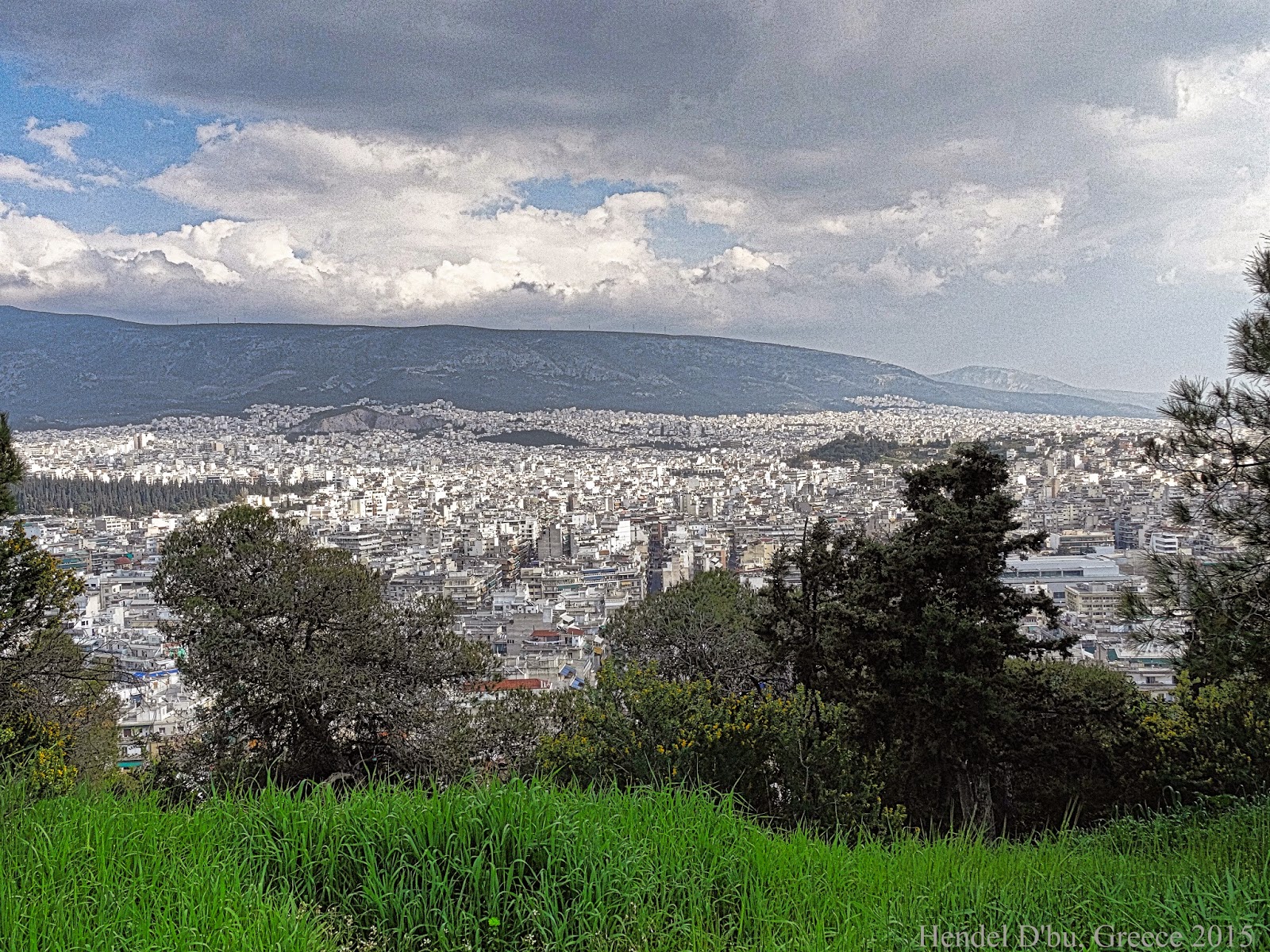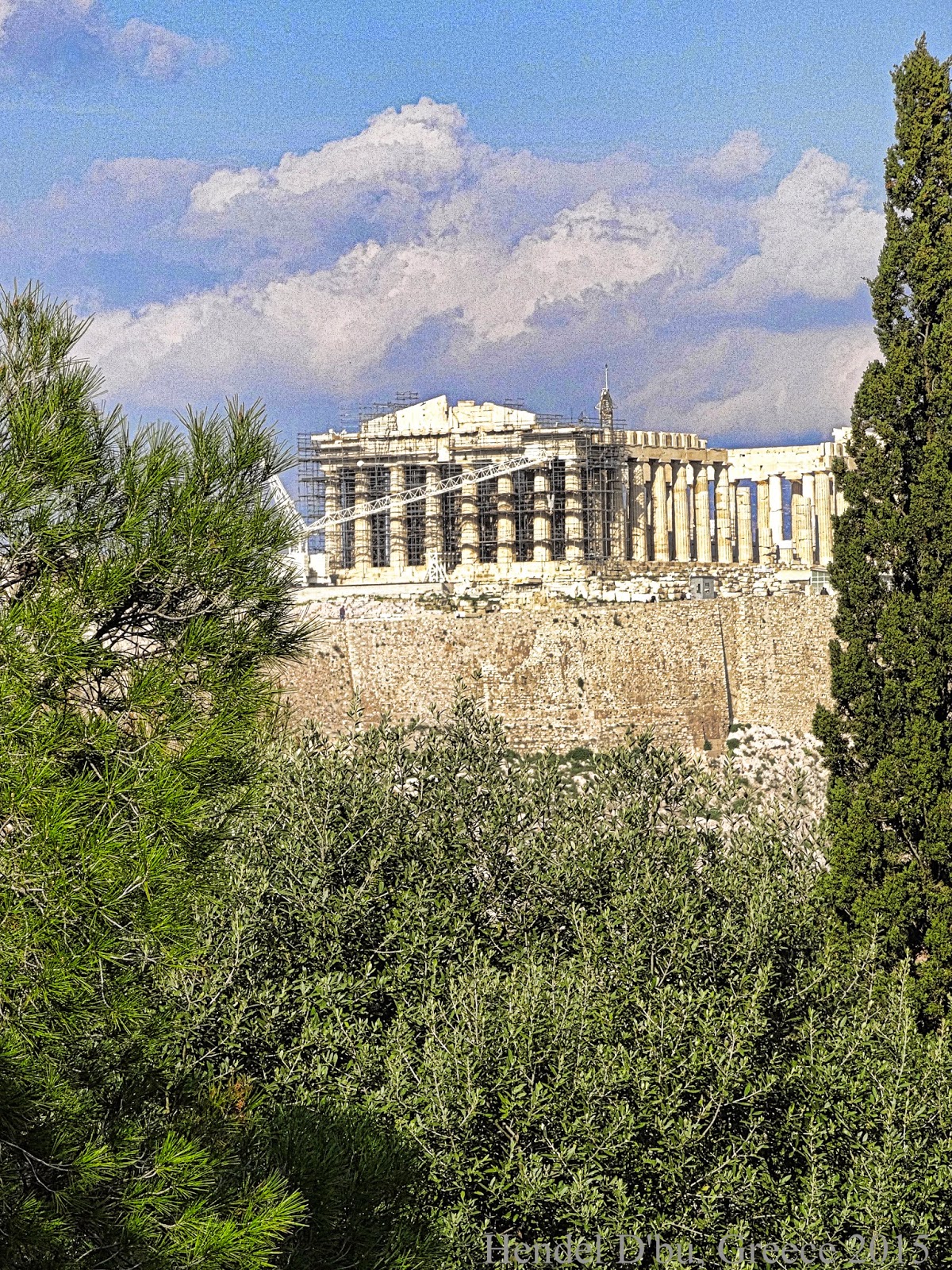OK, so all the other students have already been up this most interesting hill.
Now it was our turn.
Philopappos died in 116, and his death caused great grief to his sister Julia Balbilla, citizens of Athens and possibly to the imperial family. As a dedication to honor the memory of Philopappos, Balbilla with the citizens of Athens erected a tomb structure on Mouseion Hill near the Acropolis of Athens. His marble tomb monument is still known as the Philopappos Monument, and the hill is today known as Philopappos Hill (Λόφος Φιλοπάππου). The Greek geographer Pausanias (Description of Greece, I.25.8), describes Philopappos’ grand tomb as a monument built for a Syrian man. The monument was built on the same site where Musaios or Musaeus, a 6th-century BC priestly poet and mystical seer, was held to have been buried. The location of this tomb, opposite the Acropolis and within formal boundaries of the city, shows the high position Philopappos had within Athenian society.
The views from this hill were fantastic. You can truly see how Athens is just a sea of concrete and humanity.
 |
| another tourist on the hill |
 |
| in the foreground is the Acropolis Museum (can you see the people sitting with coffee on the deck?) further, you can see the Marble Stadium and our CYA building (to the left of the stadium) |
 |
| my sweet companion |
 |
| the flowers are starting to come out! |
 |
| on the way down the hill there is a grotto that was used as a sanctuary of sorts - there was actually a rather creepy altar set up with offerings the day we were there |
 |
| you can kinda see that altar in the back...it was covered with fruit, flowers, and some sweet liquid that was attracting a lot of bees |
 |
| Zappion and the National Gardens |













No comments:
Post a Comment